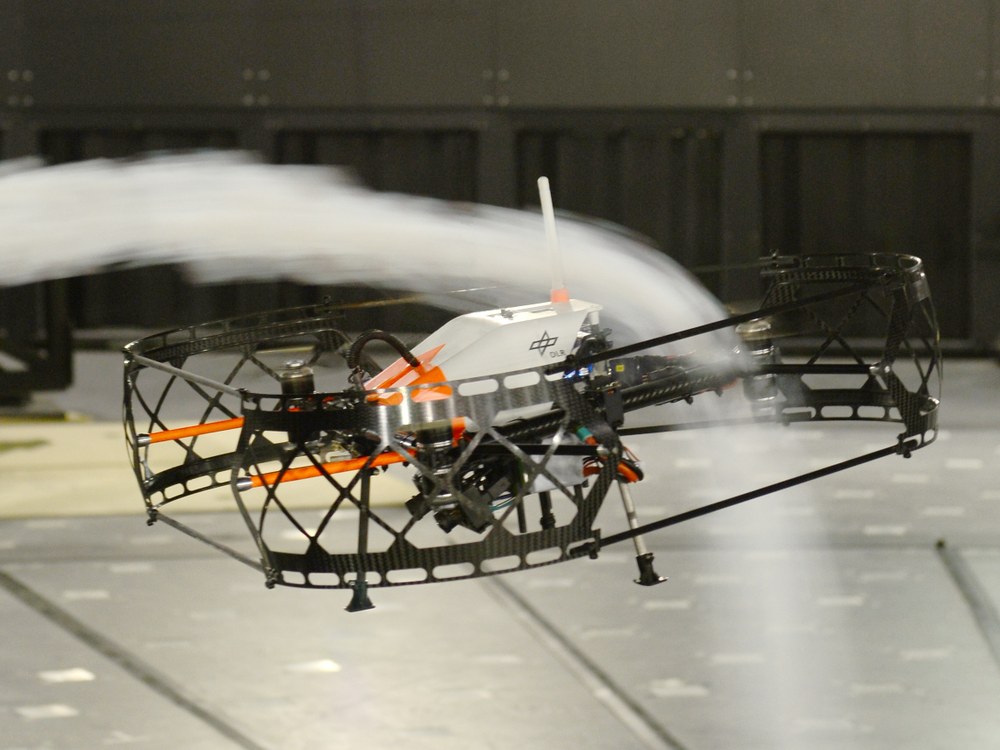Ardea
Ardea is a Micro Aerial Vehicle (MAV) that has been developed from the ground up at the German Aerospace Center's Institute of Robotics and Mechatronics. Two major research directions for MAVs are autonomous exploration of unknown environments and cooperation with emergency teams in disaster situations.
Ardea was first presented to the public in 2016.
Technical Data
Footprint: | 68 cm × 68 cm × 30 cm |
Weight: | 2.4 kg |
Flight time: | approx. 10 minutes |
Power supply: | 4S (14.8 V) LiPo battery 7000 mAh |
On-board sensors: |
|
Capabilities: |
|
System description
Especially desirable is the development of systems which can operate in diverse environments, for example in collapsed buildings or on alien planets, where GPS positioning is not available and self-contained localization, navigation and mapping using on-board sensors is crucial. Ardea is well suited to operating in such foreign environments and difficult terrain. An important research goal for Ardea is cooperative action with the LRU as a heterogeneous robot team where the various skills of each robot can be leveraged to achieve common goals more efficiently. Continuing development of Ardea is vital to well-rounded research of useful and autonomous systems — to that end our in-house engineering allows direct access to all critical on-board hardware, such as the motor currents, which are used to estimate relative wind speeds and other external forces.
Ardea has four Ultra-wide Angle Lens cameras which enable 240° view in the vertical direction. Thus Ardea has simultaneous coverage of the ground and directly above, facilitating navigation and mapping in narrow spaces such as caves. Additionally Ardea's FPGA runs Semi-Global-Matching (SGM) stereo image processing of the four cameras to produce depth maps which enable it to perceive the three dimensional world.



Selected Publications
Teo Tomić, Korbinian Schmid, Philipp Lutz, Andrew Mathers, Sami Haddadin: "The flying anemometer: Unified estimation of wind velocity from aerodynamic power and wrenches" in Proc. of the 2016 IEEE/RSJ International Conference on Intelligent Robots and Systems (IROS), Daejeon, Korea, 9–14 October 2016.
Marcus Gerhard Müller, Florian Steidle, Martin Schuster, Philipp Lutz, Moritz Maier, Samantha Stoneman, Teodor Tomic, Wolfgang Stürzl: "Robust Visual-Inertial State Estimation with Multiple Odometries and Efficient Mapping on an MAV with Ultra-Wide FOV Stereo Vision" in Proc. of the IEEE International Conference on Intelligent Robots and Systems (IROS), Madrid, Spain, 1–5 October 2018.
